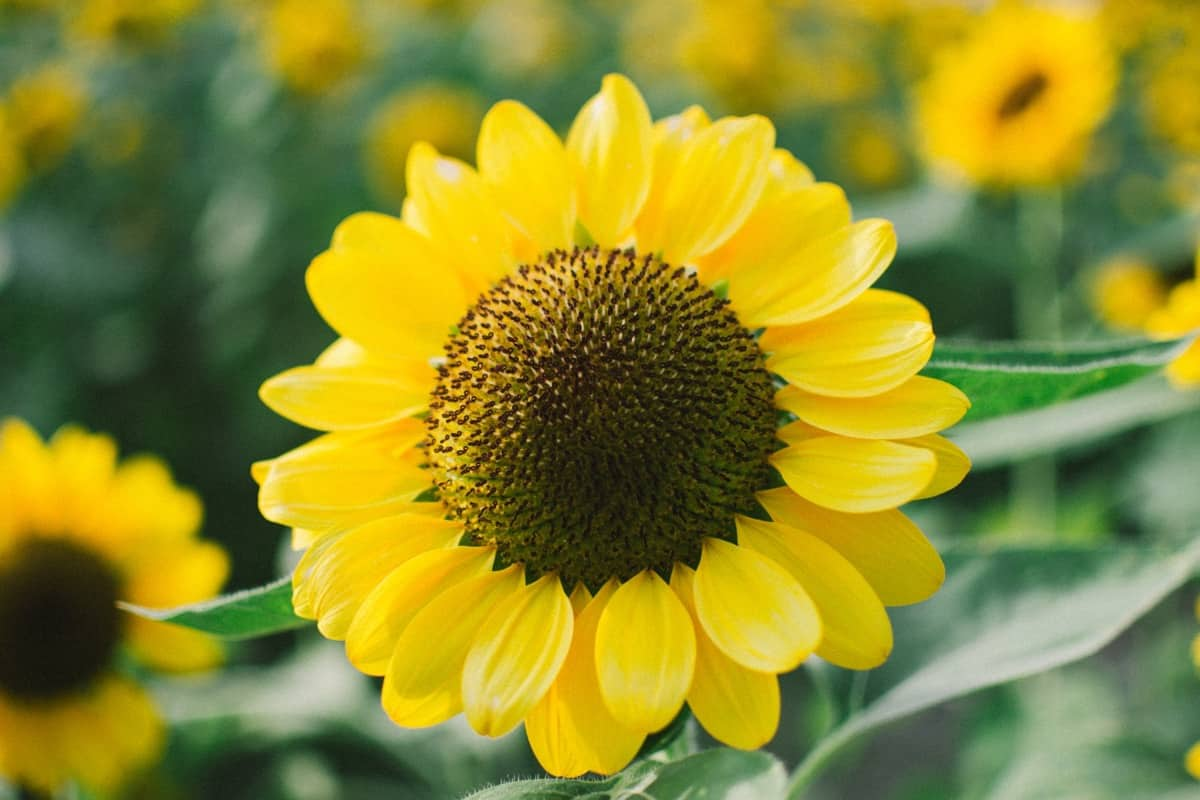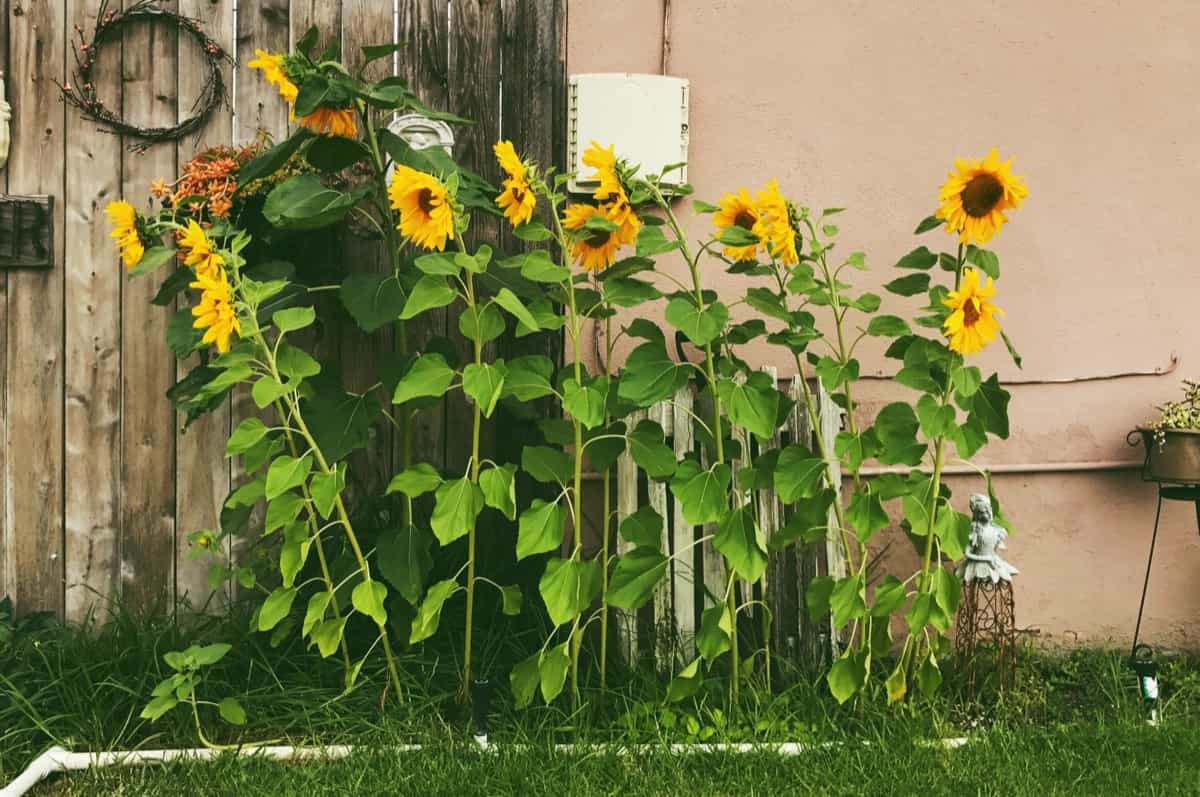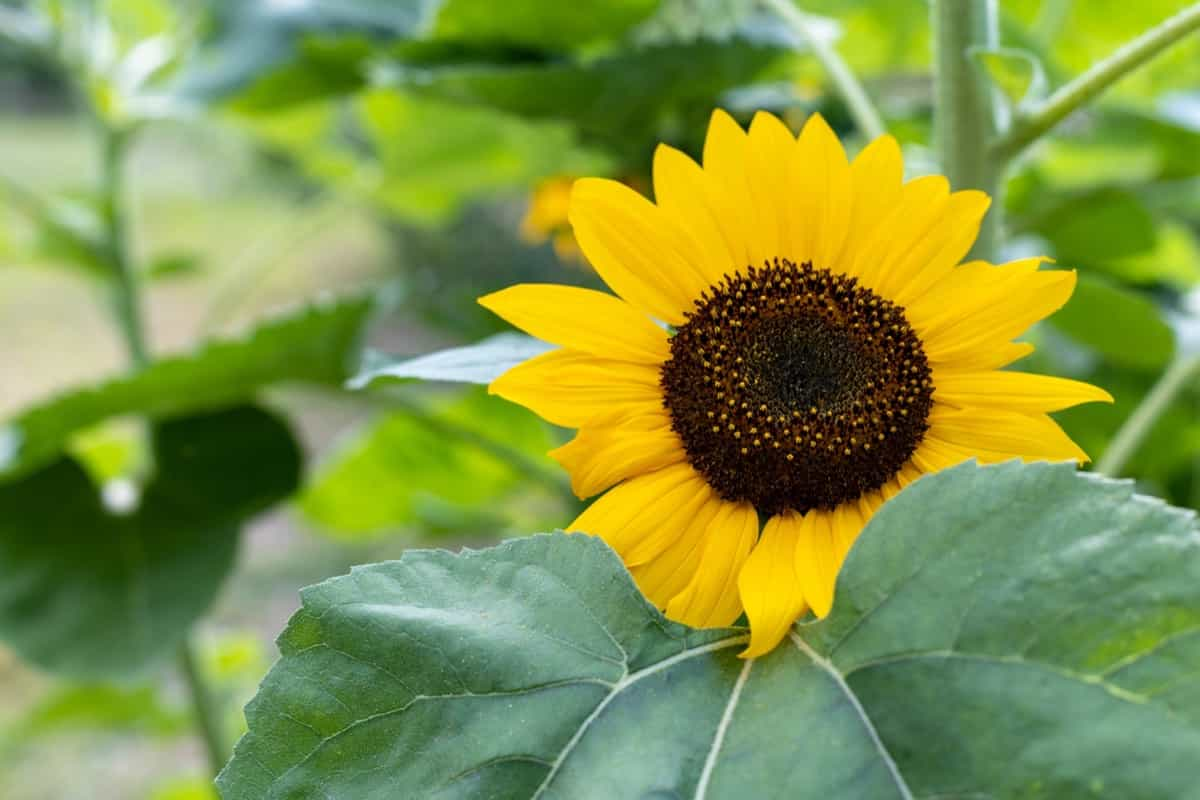Sunflowers, renowned for their spectacular beauty and towering heights, are iconic symbols of summer. These vibrant blooms inject an irresistible charm into any landscape with their massive, sun-like flower heads that track the sun’s path across the sky. Fear not if you’ve always desired to cultivate sunflowers yet find the process intimidating.

This comprehensive guide will help learn the process and offer clear instructions on everything from growing sunflowers in pots to the best soil for sunflowers, what month to plant sunflowers, and more. We’ll also answer common questions, like, do sunflowers come back every year, how long do sunflowers take to grow, and can you grow sunflowers from sunflower seeds? So let’s dive in and brighten your garden with these glorious, sun-seeking giants.
How to Grow and Care for Sunflowers
How to Plant Sunflower Seeds in Pots
Starting sunflower seeds in pots is a common practice among gardeners who wish to have more control over the early growth period of their plants. To begin with, choose a pot at least 12 inches deep and wide to accommodate the extensive root system of sunflowers. Fill the pot with a good-quality potting mix, leaving about an inch of space from the top.
Sow one or two seeds in each pot, pushing them about an inch deep into the soil. Water the seeds well, ensuring the soil is thoroughly damp but not waterlogged. Place the pot in a sunny location, as sunflowers require full sun to germinate and grow properly.
Sunflower Care Tips for Beginners
Once sunflower seedlings have established, they will need regular care and attention to flourish. Sunflowers are generally hardy but require full sun (at least six hours a day) and well-drained soil. Regular watering is essential, especially during dry spells, but overwatering can lead to root rot.
Watering should be done when the upper layer of soil is dry to the touch. It is advisable to use a slow and thorough watering method to promote deep and robust root growth. Don’t forget to stake your sunflowers, especially if they’re the taller varieties, as this will help them stand upright and resist strong winds. Lastly, you may want to consider planting sunflowers along a fence, which provides additional support and creates a beautiful, dramatic border.
Sunflower Gardening: Step-by-step Guide
Gardening with sunflowers can be an enjoyable and rewarding endeavor. Prepare your soil by removing weeds and breaking it up with a garden fork or tiller. Add organic matter or compost to improve the soil’s fertility and water retention. Decide whether to start your seeds indoors or sow them directly into the ground. For optimal planting, sow your seeds approximately one inch deep and maintain a six-inch spacing between them. Adequately water the seeds and ensure the soil remains moist until germination occurs.
Best Soil for Growing Sunflowers
The best sunflower soil is loamy, well-draining soil rich in organic matter. Sunflowers don’t require much from the soil and prefer a pH level between 6.0 and 7.5. Enhancing soil fertility and moisture retention can be achieved by incorporating organic compost or well-decomposed manure. In the case of growing sunflowers in containers, it is important to use a well-draining potting mix to prevent excessive water retention, which can result in root rot and fungal infections.
In case you missed it: How to Start Sunflower Farming in the USA: A Step-By-Step Production Guide

Watering Schedule for Healthy Sunflowers
Watering is one of the crucial aspects of sunflower care. While sunflowers are drought-tolerant once established, they require consistent watering during the early stages of growth. During this period, water them thoroughly once the top inch of soil feels dry. Adjust the watering frequency as they mature, considering the weather and soil moisture levels. During hot, dry periods, deep watering once a week should suffice. It’s best to water in the early morning or late evening to minimize evaporation and give the plants enough time to absorb the water.
Sunflower Pruning Techniques for Optimal Growth
While sunflowers typically don’t require much pruning, there are times when a little trimming can promote healthier growth. If your sunflower plants have multiple heads and you desire one large flower instead of many smaller ones, you can prune the extra heads when they’re still buds. This redirects energy and resources to the remaining flower, allowing it to grow larger. Pruning can also be useful in controlling the size of sunflowers, especially when they are grown in pots or small gardens.
Sunflower Pests and Diseases: Prevention and Treatment
Like all plants, sunflowers can succumb to pests and diseases. Common pests include aphids, beetles, birds, and squirrels. Protect your plants by placing netting around them, using natural predators like ladybugs and lacewings for aphids, or applying organic pesticides. Diseases such as mildew, rust, and fungal infections can occur if sunflowers are grown in too damp or crowded conditions. Proper watering, spacing, and rotation practices can help prevent these issues. If a plant does become diseased, it’s usually best to remove it to prevent the disease from spreading.
Sunflower Companion Plants for a Thriving Garden
When planning your garden, consider pairing sunflowers with compatible companion plants. These plants can benefit from growing near sunflowers or provide some benefits to them. With their tall stems and large leaves, sunflowers can provide shade for heat-sensitive crops like lettuce. They also attract pollinators, which can help boost your garden’s productivity. Some good companions for sunflowers include cucumbers, corn, and beans.
Harvesting Sunflower Seeds: When and How to Do It
Harvesting sunflower seeds is a satisfying conclusion to the growing process. When to harvest depends on the variety, but generally, you should harvest when the back of the flower head turns brown, and the seeds look plump and are black or dark gray. To harvest, cut the head off with a few inches of stem attached.
Brush off or blow out any loose debris or bugs, then rub the seeds out of the head with your hands. Let the seeds dry out for a few days before storing. Remember, you can save some seeds for replanting next season. So, can you grow sunflowers from sunflower seeds? The answer is a resounding yes.
In case you missed it: 1 Acre Sunflower Seed Cultivation Project Report in India: Production Cost and Profit

Overwintering Sunflowers: Protecting Your Plants in Cold Climates
Lastly, let’s address a common query: do sunflowers return yearly? Sunflowers are typically annual plants that complete their life cycle in one season. However, if you live in a region with mild winters or growing perennial varieties, you can help your sunflowers survive the winter. Cut back the stems to about 6 inches above the ground after the first frost.
To protect the roots from low temperatures, generously apply a dense coating of mulch. Remember, even if your annual sunflowers don’t survive the winter, they can self-seed, or you can collect seeds and plant them the following year. With these tips, you can enjoy the sunny splendor of sunflowers year after year.
- Feed Your Flock for Less: Top 10 Tips to Save on Chicken Feed
- Ultimate Guide to Ossabaw Island Hog: Breeding, Raising, Diet, and Care
- Hatching Answers: The Top 10 Reasons Your Chickens Aren’t Laying Eggs
- Eggs and Economics: Breaking Down the Cost of Raising Backyard Chickens
- Defend Your Greens: Proven Methods to Keep Iguanas Out of Your Garden
- Ultimate Guide to Cinnamon Queen Chicken: A Comprehensive Guide for Beginners
- Ultimate Guide to California Tan Chicken: Breeding, Raising, Diet, Egg-Production and Care
- Ultimate Guide to Marsh Daisy Chicken: Breeding, Raising, Diet, and Care
- 10 Types of Chicken Farming Businesses You Can Start for Profits